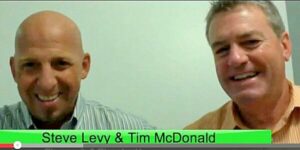
How to Attract Gen Z Talent With Mental Health Support
If your organization is aiming to attract and retain a high-quality workforce, it’s essential to understand how employee needs are evolving. Each generation has a

If your organization is aiming to attract and retain a high-quality workforce, it’s essential to understand how employee needs are evolving. Each generation has a

If you lead a business of any kind, it’s essential to understand the factors that influence employee satisfaction in your organization. This kind of insight

Investment in learning and talent development is an essential ingredient of every company’s engagement and retention plans. What is one crucial topic to include in

The Great Resignation has highlighted the importance of employee retention, but do you know which employees you need to engage the most? What should managers
Understanding your corporate culture is critical to the success of any organization. Culture is not one size fits all. It differs based on who the
When undertaking any transformation within the workplace, leaders should focus on a deep understanding of the corporate culture. That means knowing who their employees are,
The TalentCulture #WorkTrends Show is all new on Wednesday, March 2, 2016, from 1-2 pm ET (10-11 am PT). #WorkTrends welcomes Mike Lewis, author of
Brand marketing is a field that contains many innovators and sharp thinkers. Nowhere is this more visible than in the work of Seth Godin, author
Earlier this week I discussed a war for talent. As cliché as the war for talent sounds, it is real. Recruiters and HR professionals have
Company success links directly to what talent management, employee engagement and organizational culture have in common. The causal link among the three elements is powerful.
The TalentCulture #TChat Show is back live on Wednesday, November 12, 2014, from 7-8 pm ET (4-5 pm PT). The #TChat radio portion runs the
The TalentCulture #TChat Show is back live on Wednesday, October 22, 2014, from 7-8 pm ET (4-5 pm PT). The #TChat radio portion runs the

The TalentCulture #TChat Show is back live on Wednesday, June 11, 2014. #TChat Radio starts at 6:30 pm ET (3:30 pm PT) and the convo continues on #TChat Twitter chat from

How can leaders revitalize business cultures? Symbols may not seem essential, but let’s take a closer look

This week, #TChat offers 3 ways to play! We marry old school with new tech, and hopefully advance workplace culture and practices for everyone